 |
 |
Our enthusiastic and extremely knowledgeable perennials team is here to answer your questions and help you choose the best perennials for your situation. There’s always something in bloom for sun, shade, butterflies, birds or deer resistance as well as a variety of bulbs for your space.
Stroll through our time-tested favorites and introduce yourself to the newest varieties. We garden with perennials too; we love them and it shows!
|
33 found, showing page 1 of 3

Profuse ruffled pale pink 5-6" flowers with a wide, deep reddish pink central bar. Thrives in full sun, tolerates shade. Blooms in spring and summer. USDA 4-11
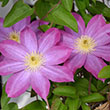
Early blooming compact variety with deep pink flowers and pale centers. Works well in tighter spaces than your traditional varieties. USDA 4-11
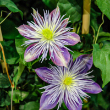
Height: 10 feet
Spread: 24 inches
Sunlight: full sun, partial shade
Hardiness Zone: 4a
Group/Class: Early large-flowered
Description:
Spectacular large, early double lavender-blue flowers with some violet undertones and white, spiky centres, are produced on a vigorous vine, a great plant for the novice and expert gardener alike
Ornamental Features:
Crystal Fountain Clematis features showy lavender star-shaped flowers with violet overtones and white centers at the ends of the branches from late spring to early fall. It has green deciduous foliage. The compound leaves do not develop any appreciable fall color.
Landscape Attributes:
Crystal Fountain Clematis is a multi-stemmed deciduous woody vine with a twining and trailing habit of growth. Its average texture blends into the landscape, but can be balanced by one or two finer or coarser trees or shrubs for an effective composition.
This is a relatively low maintenance woody vine. It is a Type 2 clematis, which means it will bloom primarily on old wood of the previous season, with a second flush later in summer. Dead and weak vines should be removed in late winter, and remaining vines should be trimmed back to the first buds that are seen to remove dead stems. It is a good choice for attracting bees and hummingbirds to your yard. It has no significant negative characteristics.
Crystal Fountain Clematis is recommended for the following landscape applications
- Accent
- Hedges/Screening
- General Garden Use
- Container Planting
- Planting & Growing
Crystal Fountain Clematis will grow to be about 10 feet tall at maturity, with a spread of 24 inches. As a climbing vine, it tends to be leggy near the base and should be underplanted with low-growing facer plants. It should be planted near a fence, trellis or other landscape structure where it can be trained to grow upwards on it, or allowed to trail off a retaining wall or slope. It grows at a medium rate, and under ideal conditions can be expected to live for approximately 20 years.
This woody vine does best in full sun to partial shade. It does best in average to evenly moist conditions, but will not tolerate standing water. It is not particular as to soil type or pH. It is somewhat tolerant of urban pollution. Consider applying a thick mulch around the root zone in both summer and winter to conserve soil moisture and protect it in exposed locations or colder microclimates. This particular variety is an interspecific hybrid.
Crystal Fountain Clematis makes a fine choice for the outdoor landscape, but it is also well-suited for use in outdoor pots and containers. Because of its spreading habit of growth, it is ideally suited for use as a 'spiller' in the 'spiller-thriller-filler' container combination; plant it near the edges where it can spill gracefully over the pot. It is even sizeable enough that it can be grown alone in a suitable container. Note that when grown in a container, it may not perform exactly as indicated on the tag - this is to be expected. Also note that when growing plants in outdoor containers and baskets, they may require more frequent waterings than they would in the yard or garden.
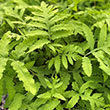
Tolerates moisture, Clay, rabbits, & deep Shade. Naturalizing. USDA 4-8

Dark red blooms. Purple toned foliage. Rounded habit. USDA 4-9
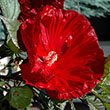
Dark red blooms. Purple toned foliage. Rounded habit. USDA 4-9
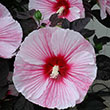
Pink blooms are centered with dark-red. Dark, purple foliage contrasts against flowers. Bushy habit. USDA 4-9
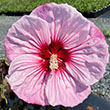
White dinner plate sized flowers with deep pink veining and a large eye. USDA 4-9
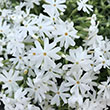
Plant Height: 4 inches
Flower Height: 6 inches
Spacing: 15 inches
Sunlight: full sun, partial shade
Hardiness Zone: 2a
Other Names: Creeping Phlox
Description:
This variety produces a showy carpet of bright white flowers shining in the spring sun; prune lightly after flowering to encourage a dense growth habit; wonderful for rock gardens, edging, or in mixed containers
Ornamental Features:
Snowflake Phlox is smothered in stunning white star-shaped flowers with buttery yellow eyes at the ends of the stems in late spring. Its tiny needle-like leaves remain forest green in color throughout the year.
Landscape Attributes:
Snowflake Phlox is a dense herbaceous evergreen perennial with a ground-hugging habit of growth. It brings an extremely fine and delicate texture to the garden composition and should be used to full effect.
This plant will require occasional maintenance and upkeep, and should only be pruned after flowering to avoid removing any of the current season's flowers. Deer don't particularly care for this plant and will usually leave it alone in favor of tastier treats. Gardeners should be aware of the following characteristic(s) that may warrant special consideration:
- Spreading
Snowflake Phlox is recommended for the following landscape applications:
- Mass Planting
- Rock/Alpine Gardens
- Border Edging
- General Garden Use
- Groundcover
Planting & Growing:
Snowflake Phlox will grow to be only 4 inches tall at maturity extending to 6 inches tall with the flowers, with a spread of 18 inches. When grown in masses or used as a bedding plant, individual plants should be spaced approximately 15 inches apart. Its foliage tends to remain low and dense right to the ground. It grows at a medium rate, and under ideal conditions can be expected to live for approximately 10 years. As an evegreen perennial, this plant will typically keep its form and foliage year-round.
This plant does best in full sun to partial shade. It prefers dry to average moisture levels with very well-drained soil, and will often die in standing water. It is considered to be drought-tolerant, and thus makes an ideal choice for a low-water garden or xeriscape application. It is not particular as to soil type, but has a definite preference for alkaline soils. It is highly tolerant of urban pollution and will even thrive in inner city environments. Consider covering it with a thick layer of mulch in winter to protect it in exposed locations or colder microclimates. This is a selection of a native North American species. It can be propagated by division; however, as a cultivated variety, be aware that it may be subject to certain restrictions or prohibitions on propagation.
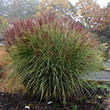
Copper red blooms late summer through winter. Narrow foliage with white margins. USDA 5-9
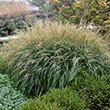
'Adagio' Maiden Grass | Pinkish blooms. Upright clumping grass. Self-seeding. USDA 5-9
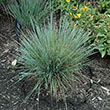
Showy seed heads. Blue-green foliage. Upright. Native. USDA 3-9
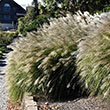
Copper red blooms. Narrow green foliage. Arching clump. USDA 5-9
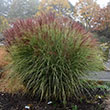
Copper red blooms late summer through winter. Narrow foliage with white margins. USDA 5-9

Tall selection forms an upright mound of blue-green leaves. Tiny reddish-brown flower. Winter interest. USDA 4-9
33 found, showing page 1 of 3















